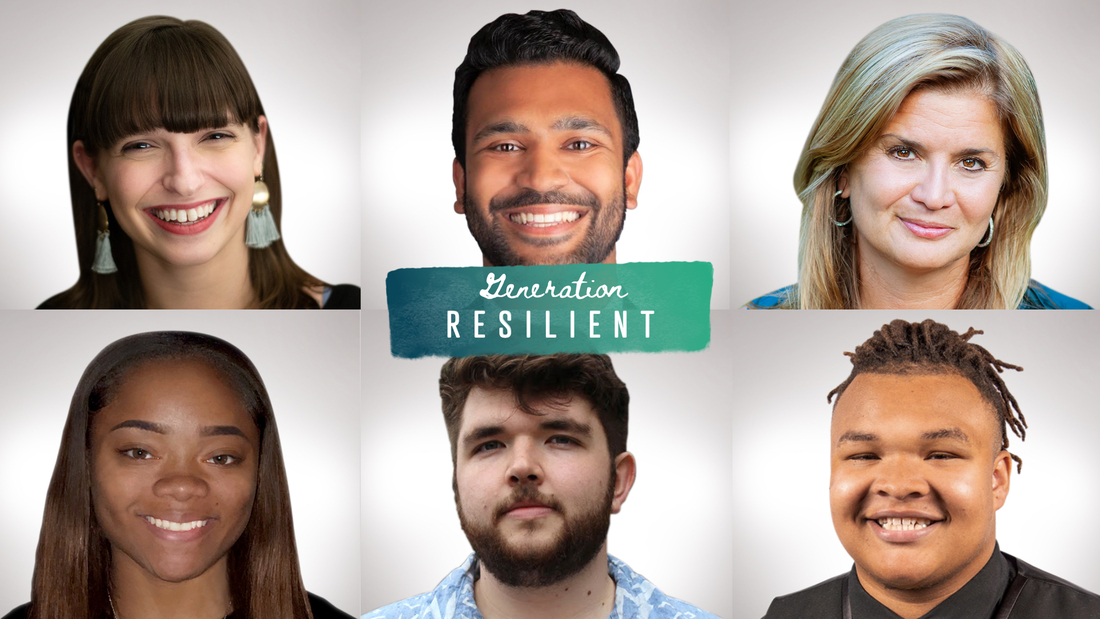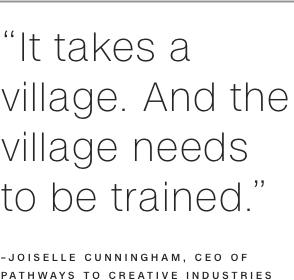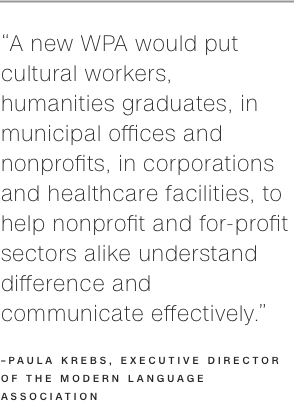[ad_1]
Then the pandemic struck — and, within weeks, everyone in Godfrey’s 11-person household was infected or exhibiting coronavirus symptoms. Still, she says, “I kept reminding myself — it could be worse: one of them could die.”
Around the same time, Catie O’Reilly had landed a health care consultancy job in San Francisco, which she planned to start soon after her graduation from Vanderbilt University. But her hopes of beginning the next chapter of her life — and paying down her $15,000 in student loans — were soon dashed.
As Covid-19 wreaked havoc on the economy, the consultancy firm pushed back her start date to 2021, with little guarantee that it would happen at all. “Though I understood why they had made this decision, my ability to maintain my composure — to hold onto hope — temporarily receded into the background,” she writes.
“To be effective health care providers,” Rao explains, “my colleagues and I [now] have to do more than treat the individual patient at his or her bedside. We have to delve into the disparities affecting the communities in which we serve.”
But there is some good news: The generation that is feeling a particularly heavy blow from the impact of the Covid-19 pandemic — and now a month of protests against centuries of racial injustice — is largely taking it in stride and showing why it deserves to be called “Generation Resilient.” In this series, we’ll explore the strategies that young people are employing to tackle these unexpected challenges and the ways they are charting a course toward a brighter future.
The odds are against ‘Generation Resilient’
The pandemic struck students at a particularly vulnerable age. According to Jeffrey Arnett, a psychologist at Clark University, ages 18-25 comprise “emerging adulthood,” a period of time falling neatly between adolescence and young adulthood.
The risk is not just limited to economics. According to a National Center for Health Statistics survey, which relies on the same mental health scale used by medical professionals, between January and June 2019, 10% of 18-34-year-olds showed clinically significant symptoms of an anxiety disorder, 5.8% experienced a major depressive disorder and 12.2% reported anxiety and/or depression.
Karla Gutierrez, who recently completed her junior year at California State University Long Beach, tells CNN that even before Covid-19, she suffered from bouts of anxiety and depression. From a working-class family in Bakersfield, California, she struggled to balance her desire to pursue her college education with her need to earn money and help support her family.
“I just kept thinking, my mom, a janitor at a local clinic, is so stressed. What can I do to make her happy? Will earning good grades be enough, or do I need to get a full-time job and bring in extra cash? There was just no easy answer,” Gutierrez says.
Since the pandemic, the percentage of Americans, especially younger ones, dealing with mental health issues has increased at an alarming rate. Over a six-day period in early June, according to the National Center for Health Statistics, 41% of 18-34-year-olds showed clinically significant symptoms of an anxiety disorder, 35.1% experienced a major depressive disorder and 47.5% reported anxiety and/or depression.
Justice Georgie, a freshman at Baltimore City Community College, has experienced this anxiety first-hand. When the pandemic struck, he was forced to move out of his cozy dorm room back to his mother’s one-bedroom apartment. “The transition was not the smoothest,” he admits, “and with my mother, a hairdresser, temporarily out of work — it was a stressful beginning to a new chapter of my life.”
Compounding the matter was the death of George Floyd. As a 19-year-old Black man, Georgie is no stranger to the threat posed by systemic racism, but now he is confronting images of it daily — and, he says, the brutality of it all feels, at times, overwhelming.
Nancy Darling, an Oberlin psychology professor, explains that while there are many factors contributing to these levels of anxiety, one of them is likely a desire to have more control of a chaotic world — one, in young peoples’ case, that has been punctuated by mass shootings and increasingly divisive politics.
Now, Covid-19 and the country’s reckoning with police brutality have taken away whatever semblance of control students like Georgie thought they had, Darling says.
They get knocked down, but they get up again
Despite these challenges, many young people remain committed to starting the next phase of their lives. Arnett says this is because of their resiliency, or their ability to bounce back from even the most daunting of circumstances.
But why can they bounce back seemingly so easily? In his 25 years of studying this age group, Arnett says he has noticed a phenomenon. Young people are often confident that whatever struggle they are facing now is temporary and will soon pass. Even young people who have little going for them seem to believe that they will eventually get what they want out of life. “The power of their belief in the future is enough to motivate them to press forward,” Arnett tells CNN.
But, he adds, his generation isn’t without options. “If you look at the protests from the last month, you’ll see that young people are taking to the streets, demanding justice and proving that we have an important role to play in reshaping our country.” Rather than waiting for state legislatures or even Congress to act, they are reclaiming our power as drivers of change, Ballesteros says.
Taking steps to level the playing field
If we want to give all students a chance at success, Benson says we must take steps to even the playing field — and that requires the assistance of adults outside the traditional family unit.
Benson is not alone in her thinking. Sara Simons, a professor of theater education at the University of Texas at Austin, says that when her students transitioned to online learning, they were dealing with trauma, fear and a loss of any semblance of structure. As an educator, she felt her role was not limited to just teaching the “content,” but also acknowledging the “context” in which her class was operating. Simons says she subsequently transitioned from full-time professor to 30% online educator and 70% unlicensed social worker.
But this kind of support must extend beyond the traditional classroom setting, she argues. High schools and universities must take a more aggressive approach to addressing students’ mental health issues — exacerbated by the pandemic and trauma of systemic racism.
Katie Donnelly, a Princeton graduate student in sociology, is particularly grateful her university has been so accommodating of students’ health and well-being. As a single mom to a three-year-old, she has been juggling the demands of researching and writing her dissertation prospectus while raising her son, who she can no longer drop off at daycare.
But Simons warns, “Trauma doesn’t take a summer vacation.” And schools, in whatever form they take this fall, must continue to be as proactive on the issue of mental health as they are about wearing masks or encouraging social distancing. They need to create counseling hotlines, virtual support groups and spaces for students to speak candidly about their experiences.
Joiselle Cunningham, CEO of Pathways to Creative Industries, tells CNN we need to go even further than that. We’ve traditionally thought of young people’s support system as their immediate family and some of their closest teachers, but given the scope of the challenges students are now facing, she argues that we need to bring potential employers into the conversation.
Angela Jackson, a partner at New Profit, a venture philanthropy organization, adds one way to do this is to expand internship access — especially through virtual paid internships. In other words, use technology to broaden opportunities for students left out — or looked over — during the traditional hiring process.
One student who can attest to the power of this kind of virtual internship is Godfrey, who attributes much of her ability to navigate Covid-19 in a home full of sick patients to her internship coordinator. When the pandemic started, her coordinator offered her both the ability to work remotely and additional pay. In doing so, she likely helped reduce the chances Godfrey would transmit the virus as her family members became infected.
Cunningham notes that scaling this kind of change requires providing all students, regardless of income or race, “radical access” to academic and professional opportunities. Her organization, she says, works to provide this kind of access, not just through internships, but also through job training, fireside chats with industry leaders — and workshops for organizations that have committed to reshaping access to career development.
‘Generation Resilient’ has its own ideas
While many students are eager for potential employers to help guide them through the uncertainty, they also have their own ideas about how best to tackle these new obstacles. The first step O’Reilly took after her job offer was all but rescinded was allowing herself to grieve. “Grief may well seem too strong a word to use for the loss of a job or the loss of a graduation. But when I sat with it, and allowed myself to feel it, I felt more open to taking my next steps,” she writes.
Though every student is facing a different set of challenges, O’Reilly explains that it was only when she felt the full weight of the experience that she was able to recalibrate, begin applying for jobs again and even land a position as a medical scribe in her hometown of New Orleans. While the pay is significantly less than her original offer, it’s still in the health care space, where O’Reilly hopes to build a career over time.
And while he is disappointed he won’t get to celebrate his graduation milestone with all those people who came to his aid, he refuses to let the pandemic get in the way of his future plans: “I am fortunate enough to have a community of folks who are genuinely invested in my success, and, well, I can’t let them down.”
For Shemar Powell, a freshman at Morehouse College, community is not limited to his friends, family or even school — it includes his church and its many members. When his in-person classes came to a close and he lost his part-time job in Atlanta, Powell returned home to Baltimore to finish off the semester online. Depressed and exhausted by the magnitude of it all, he turned to his faith, which in pandemic times took the form of Zoom church sessions.
“Imagine you are a small child with an ear infection. As you struggle against the pain, you feel the world is coming to an end. But then your mother approaches you, comforts you and takes you to the doctor where you get the treatment you need to heal. Church is the healing mother for me — more so than my school or job or any other mainstay in my life right now,” he writes.
Though not every student has found a “healing mother,” most young people who contributed to this series acknowledge they would need to be resilient, breaking with old habits and adopting new ones in order to thrive amid both a global health crisis and a nationwide movement to end systemic racism. As Donnelly puts it, this new reality “is one I simply have to accept, in all of its messy uncertainty.”
Rethinking college and student loans
While students grapple with solutions of their own, it’s vital that school administrators, educators and even state and federal legislators think broadly about how to address the gaping holes that the Covid-19 and its aftermath have exposed.
Any sort of large-scale educational reformation requires a functioning university system — and if there is one thing the pandemic laid bare, it’s just how many institutions of higher learning are falling short.
In a moment when the country is reckoning with ways to dismantle institutionalized racism, debt relief could be an ideal place to take concrete action.
The pandemic poses a risk not just for recent graduates, but for the many students who must return to school this fall. And since Covid-19 will likely be an issue come September, teachers must consider how they design lesson plans for their students — taking into account the challenges of the spring semester.
Joshua Eyler, director of faculty development at the University of Mississippi, says that rather than having the professor present a poem in class and spending the remainder of the session interpreting it, students would be required to read the poem and answer a set of analytical questions in advance of the class. This additional preparation creates an environment where students do more work on the front end, so the class — in whatever form it takes — is less about learning new material and more about analyzing and dissecting it, a process that can easily be adapted to multiple settings.
But this requires both resilient students and faculty. For students, Eyler says, this means they need guidance in how to excel in online coursework, and for faculty, this means “they need opportunities to learn about engaging teaching strategies that work” outside the usual classroom setting.
Depression era idea for millions of new jobs
A modern version of the WPA would allow Americans to begin making sense of this new and complex world. And who better to be a part of that journey than young people just launching their careers. Be they artists, historians or writers, recent graduates can help people better understand, through words and images, how our perceptions shape both ourselves, our surroundings and our beliefs — or lack thereof — in institutions.
More concretely, Krebs says, “A new WPA would put cultural workers, humanities graduates, in municipal offices and nonprofits, in corporations and health care facilities, to help nonprofit and for-profit sectors alike understand difference and communicate effectively. It would put researchers into museums and libraries to help find ways to make resources available remotely and to analyze the ways those resources are used. It would put unemployed PhDs to work within public school systems, to help overburdened teachers with shaping new remote curricula and with introducing new texts and approaches that will enable students to make a smooth transition to college learning.”
But this sudden disruption also created a chance for change. And, Williams believes, now is the right time to restructure the workforce and re-envision the “ideal worker.” For example, pre-pandemic, she says many employers said telecommuting was impossible and that all employees had to report to a central office, and yet within days of the pandemic, millions of employees had adapted to remote work fairly successfully.
Of course, all of this change is premised on the idea that recent graduates have employment opportunities at all. And, in this economy, there are no guarantees. Katherine Howard, who graduated in 2020 from Syracuse University, says, “There is no rulebook on how to begin a career in the middle of a global pandemic,” but if there is one thing she has learned over the last few months, it’s to be flexible and patient as the country begins to reopen its doors.
As a music business major, she intended to move to Los Angeles after graduation and work in booking live music events. But, as she points out, it is unlikely people will be gathering in large events anytime soon. While Howard says she still intends to move to Los Angeles, she is open to exploring other career possibilities that may not have been on her radar.
And, she adds, there is a silver lining. She will soon be able to add a new skill to her resume — “how to survive and thrive during a pandemic.”
[ad_2]
Source link



